I am in a small parking lot getting my hiking pack ready, overlooking Portage Lake in southcentral Alaska. Snowcapped mountains frame the open expanse of ice and snow that now cloak the lake. The mountains are rounded at the tops, a reminder that they were once under nearly a mile of ice.
Glacier striations mar the mountainsides all around the lake. These claw-mark-like furrows catch windblown snow and appear as ribbons of white against exposed greywacke rock. They tell a story of glaciers in retreat. Still, dying glaciers cling to the mountain tops and descend into the valleys in a few places. The goal of the day is to visit one of these glaciers known as Portage.
I finish getting my pack together and make my way toward the frozen lakeshore where a friend of mine is already waiting. I carry a pair of ice skates in one hand and ski poles in the other. My snowshoes are strapped to either side of my 40-liter pack.
The strong winds have kept the snow from forming on the first mile and a half of the lake, so we swap our boots for ice skates. As I’m lacing up my skates, Andrew reminds me that the Portage Glacier once covered the entire lake a little over a hundred years ago. As I finish tying up my last skate, I think about this fact and how lucky I am to be close friends with a Forest Ranger. From our vantage point on the lakeshore, this dying glacier isn’t even visible anymore and hasn’t been for several decades.
The ice on the lake is remarkably smooth, so skating is easy despite the strong headwind. Andrew and I weave around some windblown sections of snow to make our way across the elongate lake. The ice is clear and a subdued shade of green in the overcast light. Remarkable layers of air bubbles entrapped in the ice take the form of glass sculptures beneath our feet as we skate onward.
Like many lakes in the region, Portage Lake is longer than it is wide, carved out by glaciers several thousand years ago. The lake is about three miles long and a mile wide at its widest point. It’s shaped something like a kidney bean when viewed on a topographical map.
Snowshoes and Icebergs
After skating nearly a mile and a half, we make our way around a bend in the lake. A break in the strong winds and deep snow welcomes us. We begin the process of removing our skates and swapping them for boots and snowshoes. As we do, Andrew points out that the glacier was here during the early ’80s. I glanced back at the distant shore where Andrew said the glacier once stood. I tried to imagine how so much ice could have melted so fast. From where we stood, the glacier was still out of sight. Having been here before, I knew it would come into view soon after rounding the bend in the lake. We carry onward, now aided by our snowshoes.
The snow is about a foot and a half deep and fairly fresh making the going slow but easy in our snowshoes. After walking for another half mile in the snowshoes, we finally see the dying glacier off in the distance. Blue light is reflecting from the glacier’s craggy surface. Several icebergs dot the snow-covered lake in front of the glacier and look like islands frozen in time.
We were still over half a mile from the glacier, but the wind has already picked back up. The coolness of the glacier ice often creates a steady catabatic wind emanating from their surface. The wind bites at my exposed face, but excitement builds in me. We were getting close to the ice’s surface.
After a windswept walk in our snowshoes, we make our way to the icebergs sitting about a quarter-mile from the dying glacier’s surface. The icebergs are much larger than they appeared from afar and far more numerous. There are perhaps sizeable 30 icebergs surrounding us, ranging in size from tractor-trailer trucks to industrial buildings. At that point, it was hard to imagine that we see only 10 percent of their mass. The other 90 percent resides beneath the snow-covered lake ice. Andrew excitedly tells me that these are the biggest icebergs he’s ever seen on this lake, despite working in the region for years.
From where we stood in our iceberg archipelago, the glacier rose over nearly 200 feet tall in front of us. If this were in downtown Anchorage or any modest-sized city in America, it would be taller than most buildings.
We walk to the edge of the iceberg field about a quarter-mile from the glacier’s surface. Even in winter, glaciers like Portage can break apart and calve at any moment. With this in mind, we fight the temptation to get any closer. I take a couple of shots with my camera, straining to capture the immense scale of the glacier before us. It’s over half a mile wide and impossible to fit more than a fraction of its surface in my camera’s frame from this close view.
I put my camera down as Andrew informs me that this was where the glacier was in the early 1990s. This hit home for me. I was born in the early 1990s. A quarter of a mile is a short distance to walk on snowshoes, but I can hardly believe it when I think about it in terms of ice volume. I try to imagine what the glacier looked like then. Also, I try not to think about the irrevocable loss of this glacier and about the billions of tons of ice that disappeared from this glacier in my lifetime alone.
Requiem for a Dying Glacier
We snowshoe along the glacier’s edge and around a large rock outcrop that the glacier’s right-hand side now rests on. This cliff, covered by ice throughout my life, now rests exposed and largely free of ice. As we round the outcrop, I am once again taken back. It has been a year since I’ve visited this place. Looking at it now, I hardly recognized it. Large bare sections of greywacke rock were standing in places I saw glaciers occupy when I was here last.
In some places, the glacier no longer reached the lake. It is an eerie feeling being somewhere so familiar yet so foreign. My eyes could not help but stare at the blank sections of rock, much like a tongue can’t help but probe a blank spot left by a missing tooth. The glacier was still present here but was dramatically diminished on this side.
I shake myself out of it and follow Andrew up a snow-covered embankment to get a better look at the glacier. We use the crampons of our snowshoes to gain traction up the steep slopes. After reaching the top of the embankment, the entire glacier opens up to use. We become face to face with inspiring pinnacles of ice that adorned the Portage Glacier like a crown.
Deep blues emanate from every crack in the glacier’s splintered surface. While on our perch, the overcast sky opens up briefly to reveal patches of brilliant cyan. It is as if the sky was trying not to be outdone by the brilliant sapphire of the glacier.
From our perch, we could see the entire glacier valley. As I look, the lakeshore where Andrew said the glacier once stood a little over a hundred years ago. It was three miles away and hard to make out even with bits of blue sky breaking through.
I then can’t help but turn around and trace the glacier as far up into the mountains as I can see. I know that as the glacier retreats onto land and away from the lake, the rate of ice loss will slow but is unlikely to stop. A lump fills in my throat as I think not just of this glacier but all the glaciers I have come to know in Alaska. How much I have personally seen them change. I have been around glaciers my entire adult life, but I still find myself grappling with the concept of the impermanence of these ancient and enduring beings on this landscape.
Connecting with a Changing Land
Andrew and begin the trek back in silence. In many ways, I carried the same feeling one has during a long car ride home after visiting a loved one in hospice. As we walk, I begin to feel a sense of gratitude for my snowshoes and the connection they have given me to this dying glacier. I start to think about the changes happening to my home and realize that they are all not as dramatic as a retreating glacier but equally present. Changes in snow depth or quality, alterations to bird migration patterns, earlier arrivals of spring are all indicators of this rapidly changing world.
These changes are often more pronounced in winter. As Andrew and I walk, I think about snowshoes as a tool to help see these changes. Snowshoes by design require us to engage with wintery landscapes in an often slow and thoughtful way. I think about the changes I have been able to see with my snowshoes. I realize that as snowshoers, perhaps it is our job to pay attention to the changes that we see in our landscapes and share our stories of change with others.
We must also learn to appreciate our own role in the changes we see. We can not easily change the impacts made by large corporations or enact meaningful legislation on our own. However, we can pay attention to our own consumption rates and travel habits. Then, we can make changes where it makes sense for us and our lifestyle goals. Snowshoes leave big footprints in the snow, but it is our obligation to leave small footprints on the land.
The way forward seems daunting. But, with an appreciation for our collective role to play, we might be the first generation in human history to leave the earth better than we found it. I take one last look back at the dying glacier behind me and wonder what other option do we have?
If you want to learn more on ways to reduce our impact on the world, this guide offered by the New York Times is a great starting point.
Have you had a similar experience while snowshoeing near a dying glacier? Please share your thoughts and insights with us in the comments below.
Read Next:
Snowshoeing Alaska’s Mendenhall Valley, Juneau
Glacier National Park: Catch the Rocky Mountain Snowshoe High
Anchorage, Alaska: Top 5 Day Trips for Snowshoe Beginners
Find a Winter Wonderland in Alaska’s Interior

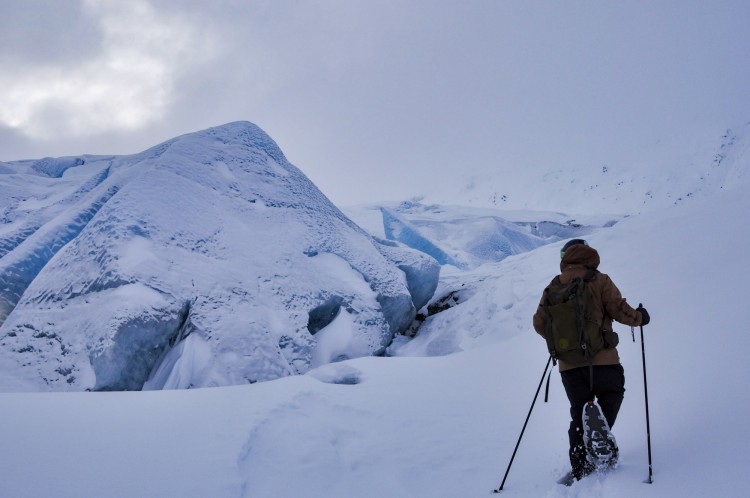
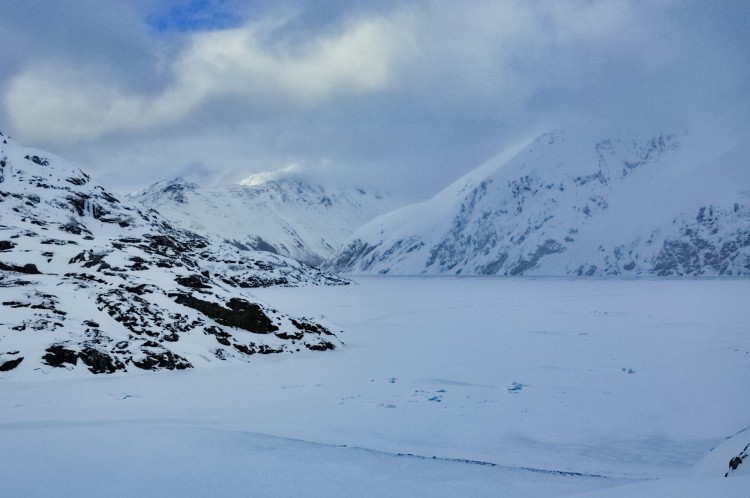
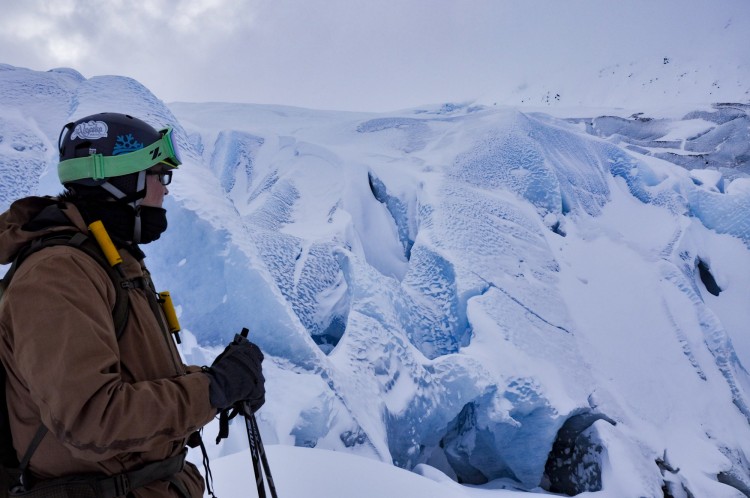
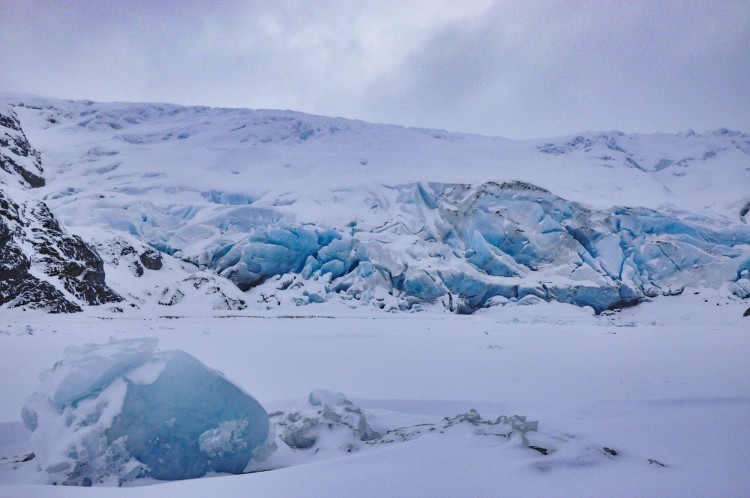
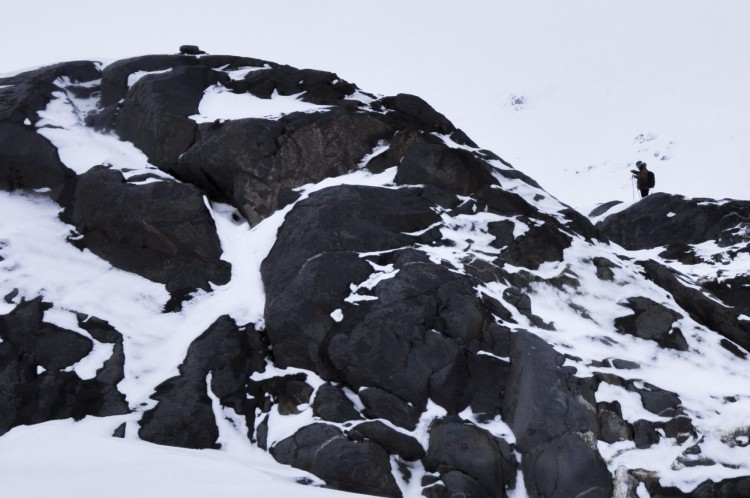
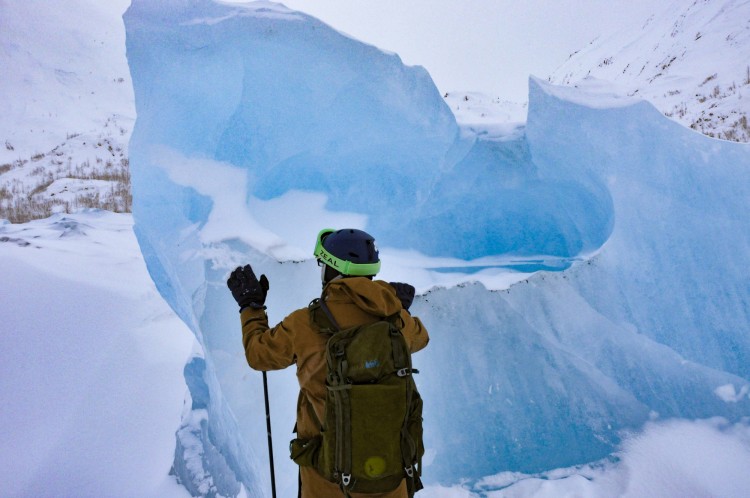
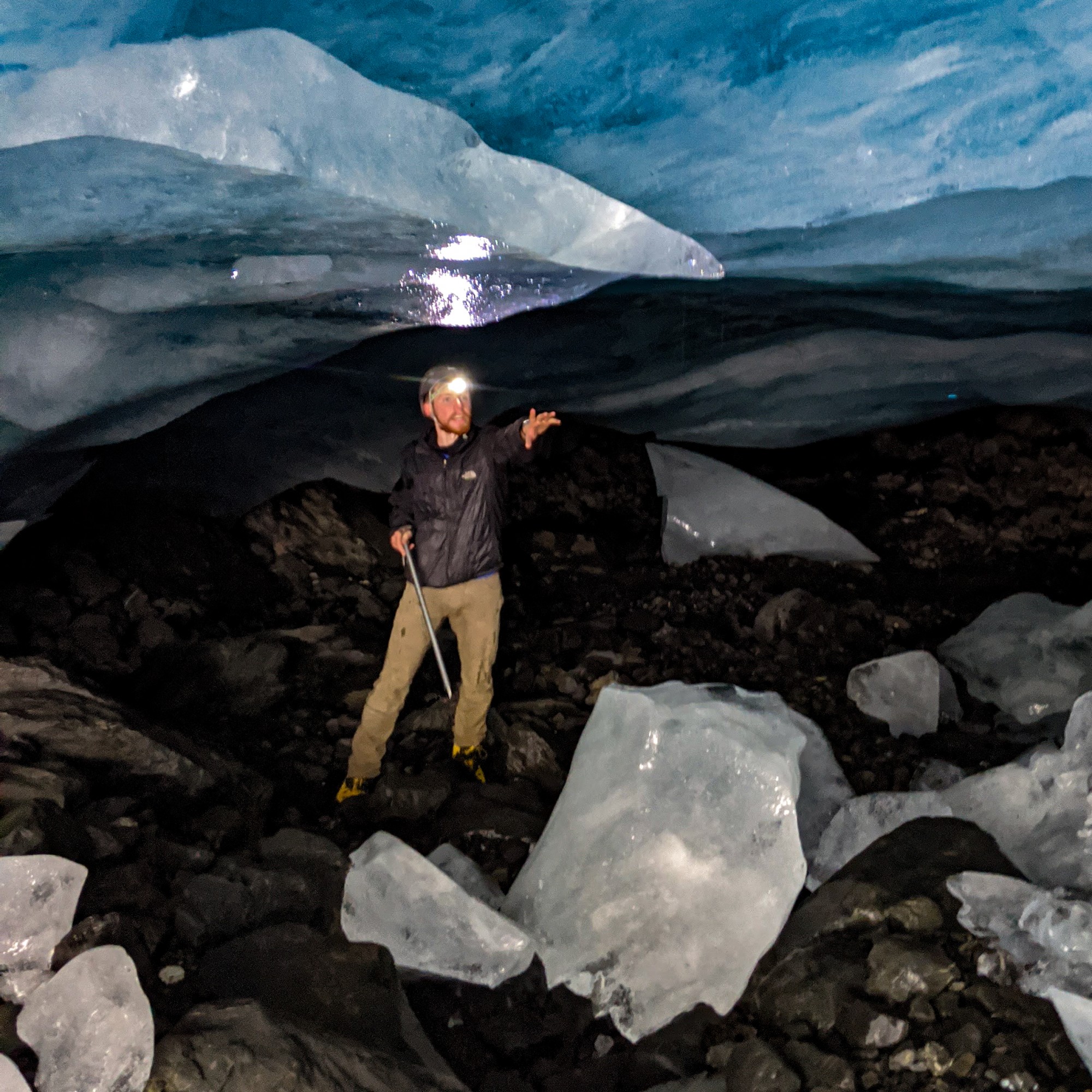
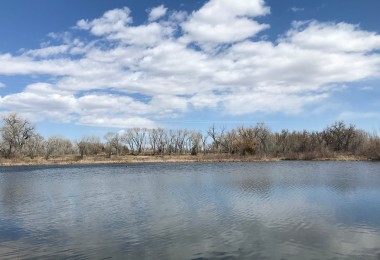
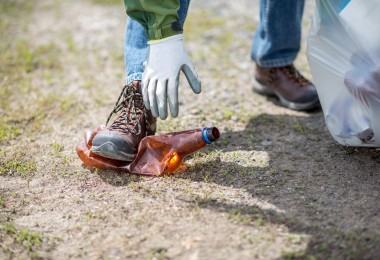
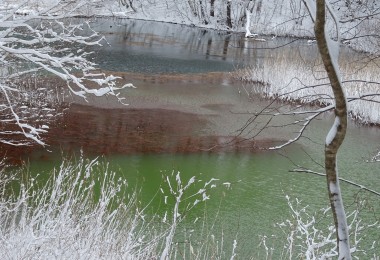


Leave a Comment